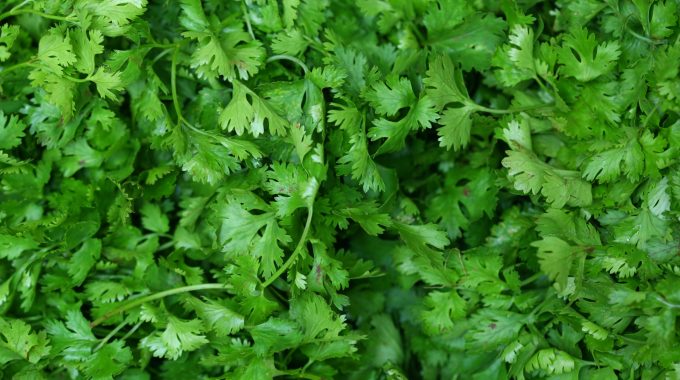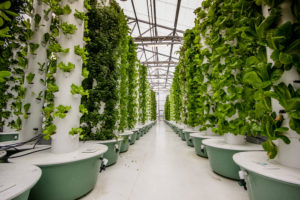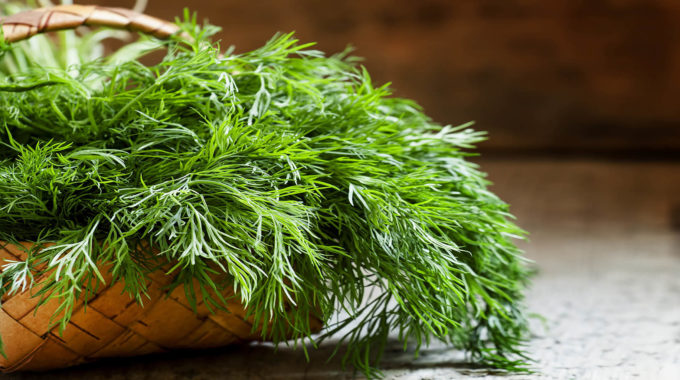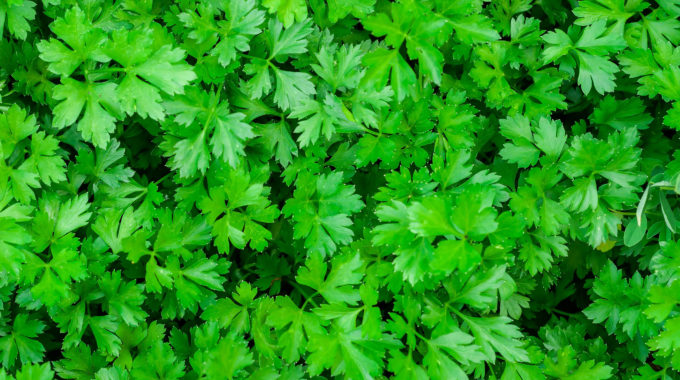Do you want to start an indoor, self-sustaining herb garden? Are you considering growing thyme…

Cilantro
Cilantro Facts
- Optimal PH: 6.5 to 7.5
- 100-250 PPM
- Temp: 50 – 72 Degrees
- Enjoys: Sunlight, other herbs
Grows Well With in Soil
- Eggplants
- Potatoes
- Asparagus
- Sunflowers
Grows Well With Aeroponically
Cilantro is a herb that is used all over the world for cooking and even medicine, making it a perfect herb to grow in your home!
Hydroponic Cilantro
The first thing you want to do is grab your seed, and place it on either soil, or even rock wool will work! For this herb, germination can be a challenge, so you could put more than one seed in each. For faster germination, soak your seeds in water for about 1-2 hours, then place into the soil.
Now we wait until we have a few leaves that are bright and green. You will need to keep your seeds moist to ensure they will grow properly. Once you have one true leaf, you can place it into your nutrient. If the light is on the leaves too much, the leaves will start to burn and turn yellow.
Once the leaves are green and bright, you can go ahead and cut them! If you want to keep growing them, cut at the base and they will regrow.
How to Grow Hydroponic Cilantro (Start to Harvest)
Aeroponic Cilantro
Cilantro, also known as coriander, is a versatile herb that adds flavor and aroma to many dishes. Growing cilantro aeroponically is a great way to ensure a steady supply of fresh cilantro year-round. Aeroponics is a soil-free method of growing plants where the roots are suspended in air and misted with a nutrient-rich solution. Here’s a step-by-step guide on how to grow cilantro aeroponically:
Choose a Suitable Aeroponic System
There are many aeroponic systems available in the market, ranging from simple DIY setups to more advanced commercial systems. Choose a system that suits your budget and space requirements. A basic setup consists of a container, a submersible pump, misting nozzles, and a timer to control the misting intervals.
Prepare the Nutrient Solution
A nutrient solution is a mixture of essential minerals and nutrients that plants need to grow. You can either buy a pre-made solution or make your own using a recipe that includes macronutrients such as nitrogen, phosphorus, and potassium, and micronutrients such as calcium, magnesium, and iron. Follow the instructions carefully, and adjust the pH level to ensure the solution is within the optimal range for cilantro growth.
Germinate the Cilantro Seeds
Soak the cilantro seeds in water for a few hours to soften the seed coat and promote germination. Then, place the seeds in a moist paper towel and keep them in a warm, dark place for a few days until they sprout. Once the seeds have germinated, transfer them to the aeroponic system, making sure the roots are suspended in the misting chamber.
Maintain the Aeroponic System
Cilantro requires a constant supply of water and nutrients to grow healthy and strong. Make sure the aeroponic system is functioning correctly, and the nutrient solution is at the right pH level. Adjust the misting intervals according to the cilantro’s growth stage, and monitor the plants for any signs of stress or disease. Regularly clean the system to prevent algae buildup and clogging of the misting nozzles.
Harvest the Cilantro
Cilantro is ready to harvest when the leaves are fully grown and fragrant. Use a clean pair of scissors to cut the stems just above the lowest set of leaves, leaving the upper leaves to continue growing. Harvesting regularly will encourage the cilantro to produce more leaves and extend its lifespan.
Growing cilantro aeroponically is a fun and rewarding way to cultivate fresh herbs at home. With the right equipment and care, you can enjoy a continuous supply of flavorful cilantro throughout the year.

Indoor Cilantro
Growing your herbs indoors would really benefit you! When you need a herb, you can just snip it for your indoor garden rather than going to the store or even outside!
Pruning
For Cilantro, pruning is really necessary unless your leaves start to turn yellow. If your leaves start to flower, that may be a good time to prune it, once you get a flower the taste starts to get bitter.
Pest Control
You will not have to worry about bugs or pests much because your herb will be inside. A few that you will have to be on the look out for are Aphids and leafhoppers.
Diseases
The same goes for diseases as pests, to prevent diseases, you will just have to take very good care of your herbs. A few diseases that may occur with your plant is Fungal Wilt and mildew. Just keep the area dry and clean and you won’t have much to worry about!
Tips & Tricks
- Cilantro likes cold water, store your water in the fridge
- The seed has a double hard layer, making it harder to germinate. You can crack the seed before starting the process
- Keep the plant very wet as it grows
- When starting the germination process, place about 3 – 5 seeds in each to ensure one of them sprouts
- Attempt to not cover up the roots with the nutritious or water
- You will notice that when the plant starts to flower, the leaves will turn yellow. CUT THOSE OFF
- If you wait to long to harvest, you carry the risk of the plant flowering
Inside Scoop
Many growers like to pre – sprout the seeds beforehand. Place the seeds in a damp paper towel on a plastic page, and put it in the fridge for about 5 days.
Someone recommended to put ice in the water when topping it off with water and nutrients.
Once the seeds have germinated, pull the rest of the seed off to improve growth.
If you notice you have any brown leaves, cut those off. Do not stress, this is very common within the first few days when growing cilantro.
Keep the seeds in a room temperature during the germination process.
The seeds are actually two seeds, so anytime you plant one seed, you are really planting two.
Daily watering will be needed as this plant drinks a lot of water.
The best varieties to grow in hydroponics are: Calypso, Santo, Marino which I linked to the best ones below!
Note that many growers struggle with germinating Cilantro seeds – keep that in mind while reading the reviews! Stick to the tops above, and you will have your Cilantro growing in no time.
Seeds:
- Sow Right Seeds, Cilantro – These have a great germination rate!
- David’s Garden Seeds, Cilantro Calypso – taking like parsley but with a hint of Cilantro as well as an 80% germination rate
- Seeds of Change, Santo Cilantro – This variety is known to germinate very slowly, tasting very mild.
- David’s Garden Seeds Cilantro Marino – with a 80% or better germination rate, this herb is great to add to salsa for an extra debt.




